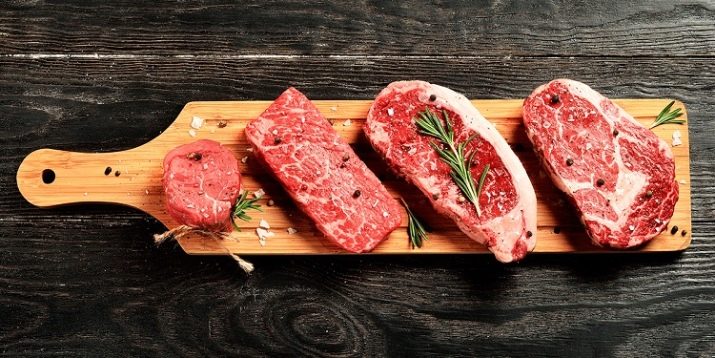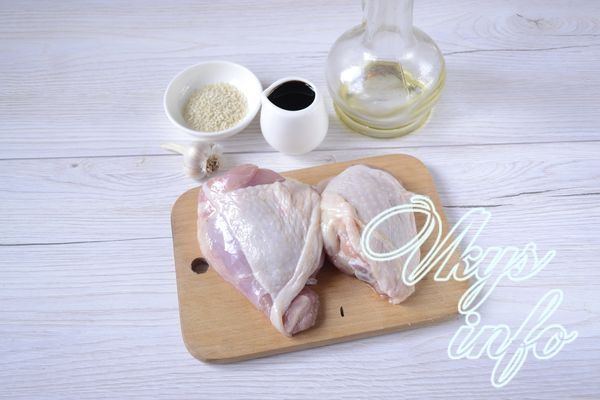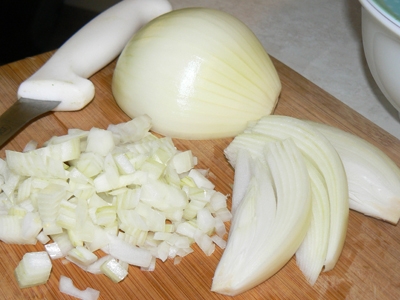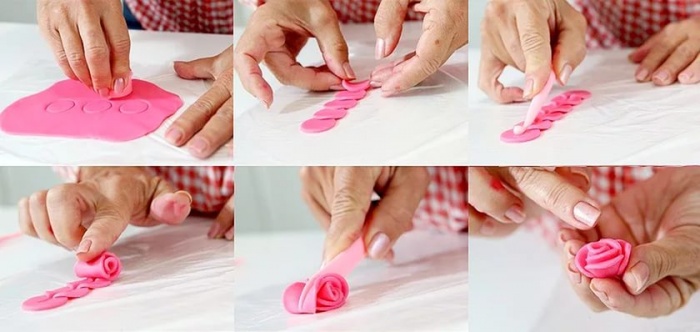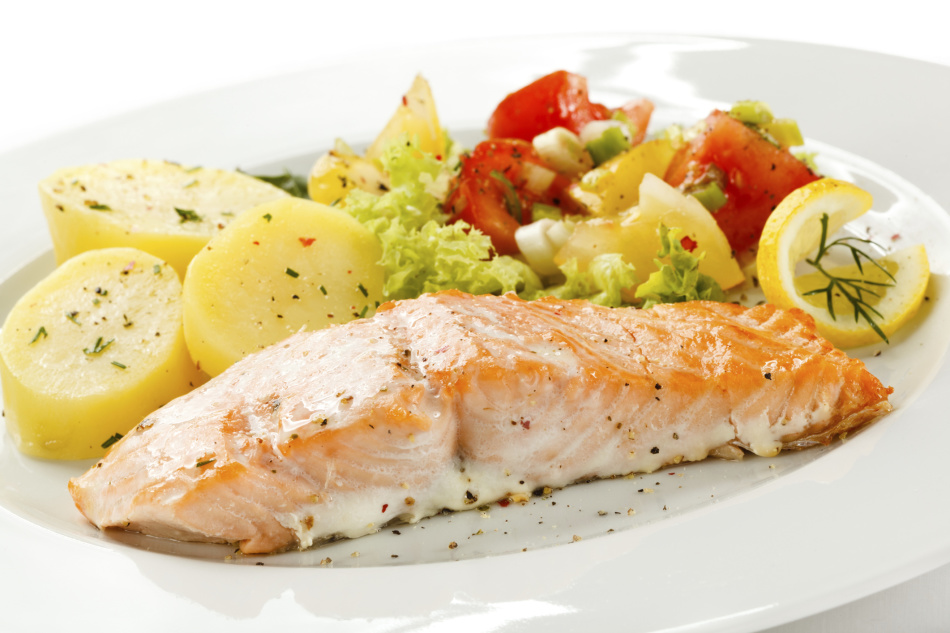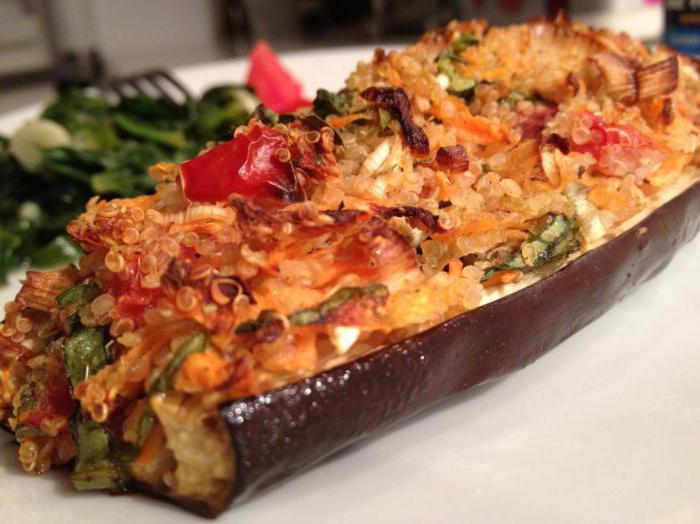Dressing for cabbage soup, borsch. (Freezing for the winter). Soup dressing for winter recipe with freezing
How many times a week do you prepare first courses? Two to three times? And for each soup do you fry? I have long switched to a very convenient system for preparing soup, when I do not waste time either cleaning vegetables, frying them, or washing additional dishes, etc.
The secret is simple: I freeze a large amount of universal dressing for soup, using it as necessary - add to the boiling broth without defrosting.
The basic recipe for universal dressing can be taken.
A small clarification: using this dressing recipe, the amount of vegetable oil must be reduced by half.
I advise you to immediately increase the number of ingredients several times in order to cook a lot of dressing at a time, and then just get it out of the freezer as necessary: \u200b\u200bthe long shelf life of the product allows you to forget about cooking the frying for a long time.
So, all the necessary vegetables need to be washed and cleaned. If you do not like or do not use some ingredient in the universal dressing, for example, celery root or garlic, then replace it or exclude it. For example, I often take parsnip instead of celery root - it has a more delicate taste.
A few more words about using greens. According to the recipe, dill or parsley can be added to a ready-made dressing and frozen. And you can, like me, freeze greens separately and add to the soup at the very end of cooking.

Chop vegetables as indicated in the recipe. The method of slicing does not matter. You can cut them into strips, grate or chop into cubes, that is, do as you used to usually do the frying for the soup.

Cook dressing in a large pan and cool to room temperature.

Prepare containers for freezing. It can be containers (plastic or glass), small jars, disposable cups, plastic bags, etc.
If there is not enough space in your freezer, then the way to freeze dressing in bags is suitable for you, because it can be placed very compactly on shelves.
Put the cooled filling in the container. Do not report roasting to the very top of glass jars or containers - during freezing the product will slightly increase in volume, and the container may crack.
Pack frying portionwiseso that one bag or container is enough to prepare one pot of soup. For example, I'm 2.5 liters. soup I take 4 tablespoons of dressing without a slide.

Pre-packaged refueling needed send in the refrigerator for 1-2 hours. The product must be well cooled before being stored in the freezer.

After cooling refuel in the freezer. In order for the product to freeze faster, it is advisable to place it at the bottom of the freezer drawers.
The temperature in the freezer should be 18 degrees or lower. Shelf life of refueling is 6 months.

In order to add dressing to the soup, it is not necessary to defrost it.
If you froze a workpiece in a bag, then tear it and remove the roast. Put in boiling soup at the desired cooking stage. When the liquid boils, cook for 2-3 minutes, and then add greens (frozen or fresh), let the soup boil, turn off the heat and leave the finished dish to brew.

If you froze a dressing in a jar, then let it thaw a little near the walls so that you can easily get the frying with a spoon. I usually take it out of the freezer 2-3 hours before making the soup and keep it in the refrigerator.

A universal dressing can be added not only to the soup, but also cooked with it, stew, added to buckwheat, rice, pasta, etc.

Post Content:
1. Square Meatballs
3. Universal dressing for soup
4. Cheese Pesto Sauce
5. Bolognese sauce.1. Square Meatballs
Meatballs - This is a very convenient convenience food for freezing. You can do a lot of them at once, so that there is a supply in the freezer. But their creation takes too much precious time. Therefore, we will adapt the ice mold for these purposes. Labor and time costs are minimal, and the form is original.
We will need:
Cooking:
. Minced meat for meatballs (half a kilogram of minced meat, 50 ml. Milk and crumb of half a loaf. Salt and pepper to taste)
. Ice mold (3 standard forms will be needed for this amount of minced meat)
. Wide knife or spatulaWe stuff the minced meat tightly into ice molds. The denser the neater our meatballs will be. Remove the minced meat with a wide knife or spatula.
Freeze.
After 6 hours, remove the mold from the freezer and take out the prepared meatballs. To make this easier to do, it should be lowered for 10 seconds into hot water so that under the water there is a bottom and walls of the molds, and the top (where the stuffing is) should not be covered with water. Then gently insert a thin knife into the gap between the meatball and the mold wall, press and remove the meatball.
We put the prepared meatballs in a bag or container for freezing and send them back to the freezer.
Everything! Now they are at least in soup, even in the oven, even in a frying pan.
2. Concentrated meat broth - the basis for soup
I want to show an example of another way of rational use of money for food and own time. We often make soups. In fact, we eat them every day, only in the summer it is lighter vegetable soups or mashed soups, and in winter the soups thicken and oily. Apparently, a chilling organism requires two qualities from food: the presence of meat and "so that the spoon stands." Therefore, it is better to cook the soup in two stages: first make a concentrated meat broth, and then dilute it with water and add vegetables to taste and mood.
From one liter of such a concentrated broth, 5 liters of meat soup are obtained. Given that the standard serving of soup is 350-400 g, then four liters of concentrate is enough for 50-57 servings of soup. The cost of one portion (excluding vegetables such as potatoes, cabbage, onions and carrots is always inexpensive) - about 5 Russian rubles. rubles. So soups are not only useful, but also very cheap.
The most rich meat soups are obtained from pork shank. It is not expensive, and the broth from it turns out great. Pork knuckle can also be replaced with beef leg. How to cook concentrated meat broth?
We will need:
. Pork knuckle - 1, 5 kg. One kilogram of shank costs about 150-200 rubles. I strongly advise you to buy not frozen but chilled shank, so as not to accidentally buy stale meat.
. Bay leaves, black peppercorns, 3-5 buds of cloves.
. Salt to tasteCooking:
Wash the knuckle, put in a five-liter pan and pour cold water for 1-2 hours. After that, scrape the skin with a knife to accurately remove all possible contaminants. Wash the knob again and pour clean cold water.Put the pot on medium heat. When the water boils, reduce the heat and remove the foam. The fire under the pan should be such that the water does not even boil, but flutters a little.
The knuckle should thus languish for about four hours. During this time, she will give all her juices and most of the fat content to the broth. As you boil, you can add water. Add spices and salt 20 minutes before cooking.
The readiness of the shank is checked very simply: the meat should be easily separated from the bones. It will be impossible to pick up such a piece with a fork - it will immediately disintegrate. Ready meat broth will be dark yellow.
Remove the knuckle, strain the broth through a fine sieve. After removing the shank in the pan, about four liters of concentrated broth should remain.
Disassemble the meat into fibers into small pieces. We no longer need bones, skin and remaining fat (you can give these leftovers to a yard dog). Distribute the meat itself into four liter jars and add broth to them (but not to the brim).
Actually, the concentrated broth is already ready. Part of it can be used immediately, and part - to freeze. You need to dilute such a concentrate with water in a proportion of 1/3 (vegetables will take about another liter in volume). And then it’s already acting like with a regular broth.
That, in fact, is all. It turns out a big saving not only of money, but also of time, since cooking the next portion of soup will no longer require cooking the broth. And twenty liters of soup is a long time even in such a carnivorous family like yours.
3. Universal dressing for soup - a lot at once.
With the onset of cold weather, cold soups, okroshka and light mashed soups practically disappear from my menu. They are replaced by hot and thick dishes: cabbage soup, borscht, hodgepodge, pickles, etc. I noticed that for the preparation of most “winter” soups you need to do the same operation: boil the meat broth and fry the onion with carrots (parsley root, celery or parsnip) in vegetable oil. On average, the soup is cooked for about 2 hours. Of these, an hour and a half takes these two operations. If you optimize these two processes, then cooking a soup even with a very slow hostess will take no more than half an hour. How?
We have already dealt with the preparation of the broth, its freezing and storage (using the stock prepared for future use gives +1 hour of free time). Now the turn is for roasting. Everything is simple here - it needs to be done a lot at once, so that it is enough for several times. I calculated that preparing a universal soup dressing in bulk (six large pots of soup at once takes 30 minutes), but it saves two and a half hours of invaluable time in the near future. I'd rather spend these two hours on a walk with a child than slicing onions and peeling carrots. And you?
Dressing for soup.
The total and active cooking time is 30 minutes.
Quantity - into 6 large pots with soup.Ingredients:
. Onion - 2 pcs. . Carrots - 2 pcs. . Celery root - 1 pc (small or ½ medium). Bulgarian pepper - 1 pc. (In winter you can use already pre-frozen and chopped). Garlic - 4 cloves. Tomato paste - 4 tbsp. (or tomato sauce 6 tablespoons). Parsley is a bunch. Dill is a bunch. Vegetable oil - 1 cup (it will take a lot). Salt - 3 tbspCooking:
1. Peel the carrots (4 minutes).
2. Pour 1/3 cup of vegetable oil into the pan and heat over low heat (1 minute).
3. Peel the onions from the husk, finely chop and fry in vegetable oil (4 minutes).
All roasting is done without a lid over low heat.4. Peel and finely chop the garlic. Add to the onion and mix. Fry. (4 minutes).
5. Three carrots on a coarse grater and add to the pan.
Add another 1/3 cup of oil and fry, stirring occasionally (5 minutes).6. We clean celery and three on a coarse grater.
Add the celery and the remaining oil to the pan, mix and fry (5 minutes).7. Pepper is cleaned, remove seeds and stalk. Dice.
Add together with tomato paste in a pan, mix and fry (3 minutes).
8. Add finely chopped greens, mix, salt and fry (2 minutes).
You need to salt to taste, and then two more times as much. It takes me 3 tablespoons of salt. It's okay that the dressing will be salted - it will only be better stored, and the future soup does not need to be salted.
All is ready. It took us almost 30 minutes to prepare the dressing for the soup.After the gas station cools down, it can be put in clean glass jars (it fits in one liter jar). Pour the centimeter remaining to the edge of the can with vegetable oil and send the can to the refrigerator. In this form, it will be stored for up to two weeks. If part of the dressing is used, then the top layer in the bank must again be coated with oil.
4. Pesto sauce - prepare, store.
With the advent of this sauce, our family almost stopped adding mayonnaise to all dishes. Now the place of universal additives is occupied by Pesto sauce ("cheese sauce"). In addition to the classic use - in the preparation of pasta or lozany, it can act as a salad dressing, added to soups, vegetable stews, meat or mushroom dishes, and simply spread on bread. In general, like mayonnaise, only tastier and healthier.
The almost daily presence of Pesto sauce on our table does not mean that we need to cook it every day. You just need to be able to store it so that it stays fresh for up to two weeks. It is for such a period that a half-liter jar of this sauce is usually enough. Once cooked - and it smells like an Italian restaurant in the refrigerator. It costs homemade sauce several times cheaper than in stores, and it tastes better in taste. It is prepared quickly and simply - nothing needs to be boiled, fried or baked. I tell you.
Pesto
Total and active cooking time - 20 minutes
Cost - $ 3Ingredients:
. Hard cheese - 200 g. If you have the opportunity to get pecorino cheese (sheep’s cheese), then use it. If you live in reality - then Parmesan. And if in a tricky way, then any other hard cheese to taste. The taste of cheese is not so important here - all the same, garlic and basil will be in the foreground.Basil - chopped about 1 cup. If it is very difficult to find basil in our northern countries in the autumn-winter period, then it can be replaced with 2 tablespoons of dry + a large bunch of fresh parsley.
Nuts - 100 g. If financial means allow, then cedar. But variants of sauce with walnuts or hazelnuts also have the right to be. The only warning about walnuts is that they must be fresh, collected no more than 3 months ago (our fresh nuts arrive on the shelves in late September and until February are quite suitable for consumption).
I advise you to never buy already packed walnuts, since they only have a limitation period on the very fact of packing. Old walnuts are bitter and can spoil the whole sauce. It is better to buy by weight and be strictly interested when the crop was harvested. Fresh walnut kernels have a light peel. If you, in spite of a request for fresh ones, are trying to slip dark brown or wrinkled nuts, then you have every moral right to cheat on the seller.
Garlic - 4 cloves. We in the family really like garlic in this sauce, therefore, we exceed this norm by 2 times. But for the first time, try to get by with a minimum of 4 large cloves.
. Olive oil - the amount depends on the density of the sauce.Cooking:
Garlic needs to be peeled and crushed using cloves. Finely chop the basil, mix with garlic and, armed with a marble mortar and a wooden pestle (or aluminum saucepan and wooden crush), crush everything together to a homogeneous mass. It should be a vigorous green and very odorous mixture. Especially lazy and in a hurry can use a blender, however, the mixture cut in the blender is less odorous than crushed by hand.Grate the cheese.
Finely chop the nuts and add to the future sauce.
Mix cheese with a mixture of garlic, basil and nuts.
It should be a fairly viscous mixture resembling plasticine. To dilute this mass and add plasticity to it, add a thin stream of olive oil. In this case, the future Pesto sauce must be stirred all the time.That's it, the pesto sauce is ready.
For storage, transfer it to a clean, dry half-liter jar (ramming tightly), and pour 0.5 cm of olive oil on top. Such an oil pillow, firstly, will prevent drying and spoilage of the sauce, and secondly, reduce the intensity of its smell (I warned that in the refrigerator, in which there is a jar of sauce, it will smell like in an Italian restaurant). If the sauce is used, then the oil from the jar must first be drained, and then refilled again so that it completely covers the sauce. It is stored in this form for up to two weeks, but, as a rule, is eaten even earlier.
5. Bolognese sauce. Cook, freeze and store.
A friend of mine works in an Italian restaurant. Once she admitted that visitors to the restaurant almost never served fresh, just cooked sauces. For example, Bolognese sauce is prepared once a week in two five-liter pots, and then portionwise frozen. If the client receives an order for a dish with this sauce, then they take it out of the freezer, and while the pasta is being cooked, it is thawed and served under the guise of fresh. She claimed that not a single person could not understand that he was eating a frozen convenience food. No one complained, only praised. So I thought: why don’t I adopt this principle? If this is practiced in a good Italian restaurant, then even more so it is permissible for me.
The results of my subsequent experiments with Bolognese sauce showed that, in fact, it is not only well frozen, but also tastes no different from just cooked. Since then, I have been preparing this sauce immediately in large quantities. I freeze portionwise in 200 gram cups. Thanks to such reserves, dinner is prepared almost instantly: while pasta is being cooked, 2 cups of sauce are thawed in the microwave (for me and my husband). And after 15-20 minutes, not just banal pasta is served for dinner, but Pasta with Bolognese sauce (sounds!). Also, this sauce can be the basis for the preparation of lasagna, served with potatoes or stewed vegetables.
Bolognese Sauce
Total cooking time - 40 minutes
Active cooking time - 25 minutes
Servings Per Container - Seven 200-gram cups are obtained from the number of foods given.Ingredients:
. Stuffing - 400 g (beef + pork). Onion - 2 pcs. Garlic - 6 cloves. Unsharp green pepper - 3 amount Tomatoes - 5 pcs (in winter you can replace with 3 tablespoons of tomato paste with 1 tsp of sugar). Olive oil - 50 ml. Dry wine - 120 ml. Dried basil - 1 tablespoon (in the summer you can use fresh - 1/3 cup chopped). Dried peppermint - a sprig (usually dried peppermint is sold in the spice department, but if not, you can gut a bag of peppermint tea that is sold in any pharmacy). Salt to taste.1. We put a kettle on the fire (boiling water will be needed a little later for blanching the tomato).
2. Fry the minced meat in olive oil.Since the sauce will be quite a lot, I advise you to cook it either in a large and deep pan, or in a pan with a thick bottom.
3. While the minced meat is fried, finely chop the onion and garlic. Add to the minced meat and also fry, stirring constantly.
During this time, we have time to finely chop green pepper.4. Peel the tomatoes (here we need boiling water) and also finely chop.
When the minced meat begins to brown, add chopped pepper.5. After 3 minutes, add the tomatoes. Close the lid and simmer all together for 10 minutes.
Now there are many ways to simplify the life of the housewives in the kitchen. One is to freeze a set of vegetables. True, without beets, there are a lot of it fresh in winter. It is necessary to grind tomatoes, garlic, bell pepper and greens, pour into molds and put in the freezer. We just throw such wonderful preparations in winter and you have borscht with the aroma of fresh vegetables, no tomato paste, everything is healthy and natural. You can add such frosts to stews, stews, pasta sauces, wherever you want.
For cooking frozen borsch dressing we need 5 hours, the number of servings is 10.
Ingredients:
- ripe tomatoes - 600 grams
- sweet and hot pepper - 150 grams
- ginger root - 20 grams
- garlic - 2 cloves
- green dill - 1 bunch.
How to prepare a dressing for borscht: a recipe
To freeze vegetables for the winter, you definitely need tomatoes, because what soup without them? No need to add tomato paste in winter, fresh tomatoes are much healthier. To make the dressing tasty, you need to find large and ripe tomatoes so that there is a lot of juice. Bulgarian pepper I added sweet and bitter, you see for yourself, if you don’t like spicy, just add one Bulgarian.

All vegetables need to be washed, it is possible in one bowl. Trim the stems from the tomato, peel the seeds, also peel the celery root and garlic. You will need to grind the vegetables so that it is more convenient, cut the tomatoes into four parts, pepper and celery root, just in large pieces.

You can grind everything through a meat grinder or using a blender. The first chopped celery root, garlic, pepper and dill, something that grinds longer. From greens, you can add everything you love - basil, parsley, young garlic castings.

Grind everything solid, now pour the contents of the bowl into a large bowl and put the tomatoes. In a couple of seconds they will become a tomato mass.

We pour it into a bowl, mix everything until smooth. You can immediately salt it, but it is better stored without salt.

Molds for such a workpiece can be different. Simple disposable cups, molds for ice, cupcakes. It’s convenient for me to lay out the vegetable harvest in the round forms for muffins. Just one form is about a tablespoon of tomato dressing for borsch. we spread the vegetable mass evenly over all the tins.
Having spent several hours in August-September to prepare dressings for soup for the winter, you get a lot of advantages. Firstly, time is saved, since in winter it will not be necessary to peel and cut vegetables.


Secondly, the budget is saved, because vegetables are cheaper in season than in winter. Thirdly, in autumn, vegetables and herbs contain more vitamins and other beneficial substances.
This is a simple and quick preparation with sweet pepper. It can not only be added to soups, but also spread on bread, making sandwiches.
Essential Products:
- Sweet pepper - 3 kg.;
- garlic - 0.5 kg .;
- hot red pepper - 0.5 kg .;
- parsley - 0.3 kg.;
- salt - 0.5 tbsp.
Cooking:
Wash vegetables and herbs. Peel the garlic. For sweet pepper, remove the seed cores, leave for hot pepper.
Interesting to know! So that the husk from the garlic leaves well, you need to put the whole head in the microwave. It will be enough for 15-20 seconds.
Skip everything through a meat grinder. Add salt and mix well. Pour jars with boiling water and dry. Then, without cooking, put the dressing in banks. Cover with nylon caps.
This dressing is well preserved without a refrigerator.
Vegetable dressing for winter soup in jars
This vegetable dressing is simply a storehouse of vitamins and other useful elements in the cold period of time. Soup with its addition is incredibly tasty and aromatic.
Essential Products:
- Carrots - 0.5 kg.;
- onions - 0.5 kg.;
- sweet pepper - 0.3 kg .;
- tomatoes - 0.25 kg .;
- vegetable oil - 200 ml .;
- salt - 1 tsp.



Cooking:
Wash all vegetables. Peel carrots and onions, remove seeds from the pepper core, white partitions and stalks.
Then transfer the finished onions to a pan with a thick bottom. Make it better with a slotted spoon, so that the oil remains in the pan. And the carrots are sent to the pan. Fry, cover with a lid until a slight blush.
While there is a process of frying carrots, you need to cut sweet pepper into a small cube. Transfer the carrots into a pan to the onion, and send the pepper to the pan. Pour the remaining oil into the pan and warm it up. Pepper should lightly brown, but remain firm.
Meanwhile, chop the tomatoes. Be sure to cut out the solid parts of the stalk mount. Cut into small cubes. Transfer the pepper to the pan. Do not fry tomatoes, immediately send to the pan.
Each vegetable must be fried separately. Since it takes a different time to cook each.
Add salt to the pan. Mix everything well and simmer, covering the pan with a lid. Do not forget to stir. After 10-15 minutes, all vegetables should become soft.
Important! Do not use iodized salt to prepare the workpiece. It can go bad or get an unpleasant aftertaste.
At the end, try the salt. If necessary, add. Next, you need to prepare the banks. It is better to take a small volume, in the future it will be more convenient to use a gas station. Banks should be sterilized. This can be done on the stove or in the microwave. Lids also boil.
Put the ready-to-fill gas station in tins well by tamping so that no air remains. Top with lids and tighten. Then turn the cans upside down and wrap them with something warm, such as a blanket. After the banks have completely cooled, they can be transferred to the basement, cellar or closet.
Read also: French onion soup: a classic recipe and other options
Dressing for carrot and onion soup
This dressing is ideal for chicken noodle soup. She will make it rich and fragrant. And to cook such a soup using dressing will be very simple.
Essential Products:
- Carrots - 1 kg.;
- onions - 0.5 kg .;
- vinegar 9% - 2 tbsp. l .;
- black pepper peas - 3-4 peas;
- bay leaf - 2 leaves;
- salt to taste.
Cooking:
Wash and chop vegetables. Cut the onion into a small cube, and grate the carrots on a fine grater. Then simmer for 30 minutes over low heat, adding a few tablespoons of water to the pan. Add spices and pour vinegar at the very end.
Interesting to know! To cut the onion without tears, you need to place it for 10 minutes in the freezer before cutting. Then volatile substances will not be released as actively.
Put the resulting dressing in sterilized banks. Cover and roll up. After the cans have completely cooled, they can be stored in the refrigerator.
Salted soup dressing with tomatoes and vegetables
Salt dressing is suitable for cooking both soup and borsch in the winter. It is enough to add 1-2 tablespoons of dressing to the dish, and it will turn into a culinary masterpiece.
Essential Products:
- Tomatoes - 0.5 kg.;
- carrots - 0.5 kg .;
- bell pepper - 0.5 kg.;
- onions - 0.5 kg .;
- parsley - 0.3 kg.;
- salt - 0.5 kg.



Cooking:
Wash all vegetables. Grate the carrots on a coarse grater. Cut pepper and onion into small strips. Peel the tomatoes. This is easy to do if you make a cross-shaped incision on the tops of each tomato and then immerse it in boiling water for several minutes. Then, in places of incision, the skin will be wrapped and removed without special efforts. Dice the tomato.
Grind parsley. Place all chopped vegetables in a deep container. Add salt and mix thoroughly. Leave on for 10 minutes so that the mixture starts up the juice.
Fill the dressing in clean, dry cans, pour out the juice that is separated into cans as well. Cover with nylon caps. You can store at room temperature.
From the specified amount of vegetables, 4 cans of dressing of 0.5 liters are obtained.
Good to know! During salting, foods retain their beneficial substances and vitamins better and longer.
Dressing for the winter with parsley and celery
Having fed your family with soup with such dressing in the winter, you will provide them with vitamins, which are so lacking in the cold season. And the use of parsley, which is part of the dressing, is the prevention of colds.
Essential Products:
- Parsley root - 2 pcs.;
- parsley - 200 g;
- celery root - 2 pcs.;
- celery greens - 200 g;
- red hot pepper - 1 pc.;
- bell pepper - 2 kg.;
- carrots - 0.5 kg .;
- garlic - 150 g;
- vinegar - 100 ml .;
- salt - 2 tbsp. l
Cooking:
Wash all vegetables and herbs. Cut the pepper in half and remove the seed cores. Peel the roots of celery, parsley and carrots. Garlic also peel. Dry the greens from the water.
Good to know! Vegetables will be easier to clean from dirt using special brushes. They are sold in hardware stores.
All products should be cut into several parts and pass through a meat grinder. Mix thoroughly, add salt and vinegar. Their number may vary depending on your preference.
Sterilize jars and lids. Lay out the finished dressing and roll up. After complete cooling, move to the refrigerator.
Dressing for winter for borsch from green tomatoes
Borsch dressing is well infused in jars and gives the dish a rich taste and aroma. It should be added to the borsch after the meat and potatoes are ready.
Read also: Buckwheat Chicken Soup - 5 Simple Recipes
Essential Products:
- Beets - 2 kg.;
- green tomatoes - 0.7 kg .;
- onions - 0.3 kg .;
- cabbage - 0.5 kg .;
- garlic - 50 g;
- vinegar - 100 ml .;
- ground black pepper - 1 tsp;
- sunflower oil - 100 ml .;
- sugar - 100 g;
- salt - 2 tbsp. l .;
- water - 0.5 tbsp.



Cooking:
Peel and grate raw beets. Cut green tomatoes into small slices. Chop the cabbage and chop the onion.
All chopped vegetables should be sent to a deep enameled container. Add sunflower oil and salt. Mix well.
Boil half a glass of water and pour it into vegetables. Mix everything again. Send to the stove. Simmer over medium heat for 50 minutes stirring all the time.
After the specified time, add chopped garlic to the dressing. It can be squeezed out through a press or finely chopped with a knife. Also send pepper and vinegar to the container. Stir and simmer another 10 minutes.
Sterilize the jars, boil the lids for 10 minutes. Arrange the finished borsch dressing in cans, crushing it well with a spoon so that no air remains. Banks roll up and turn upside down. Wrap a blanket. After complete cooling, put in a cool dark place.

Good to know! One of the options for sterilizing cans: Put a metal colander in a pot with boiling water. From top to bottom, put the jar and sterilize for at least 20 minutes.
Winter dressing with beans
You can make excellent bean soups from this dressing. It is also suitable as a side dish for second courses.
Essential Products:
- tomatoes - 4 kg .;
- bell pepper - 1 kg.;
- onions - 1 kg .;
- beans - 1 kg .;
- sugar - 0.5 kg .;
- sunflower oil - 0, 5 l .;
- tomato paste - 2 tbsp. l .;
- salt - 3 tbsp. l
Cooking:
Beans need to be prepared in advance. It should be washed and filled with water. Leave for 6 hours so that it swells.
Good to know! Beans need to be soaked not only so that it cooks faster. And also to remove enzymes that cause gas in the intestines.
After this, drain the water from the beans and add a new one, add salt. Put on the stove and cook until cooked. Then pour the beans with cold water.

Peel and finely chop the onion. Bell peppers and tomatoes also chop. Add salt, sugar and sunflower oil to the vegetables. Put on the stove, bring to a boil and cook for another 50 minutes over low heat. Then add the boiled beans and cook for another 10 minutes.
While the gas station is hot, it is transferred to banks and rolled up. Next, you need to turn them upside down and leave until the banks have cooled. Then rearrange in a cool place.
Pickle dressing
This gas station will help you out when there is a need to urgently cook dinner, and time to spare. It is not necessary to boil, stew or fry anything in advance for preparation, and this greatly simplifies preparation.

Cooking:
Wash all vegetables. Dice cucumbers, if desired, can be grated. Chop the onion. Coarsely grate the carrots. Peel the tomatoes and cut into cubes. Wash barley.
Put the tomatoes in a pan, add water, as well as salt, sugar and vegetable oil. Next, add the remaining vegetables and pearl barley. Mix everything and cook 20 minutes after boiling.
After 20 minutes, add vinegar and cook another 10 minutes. Then lay the workpiece in banks and roll up. It is perfectly stored at room temperature.
